• Non-Stick
3 Non-Stick Pan Alternatives

Reviewed by Trinity Anderson
Last Updated January 2024
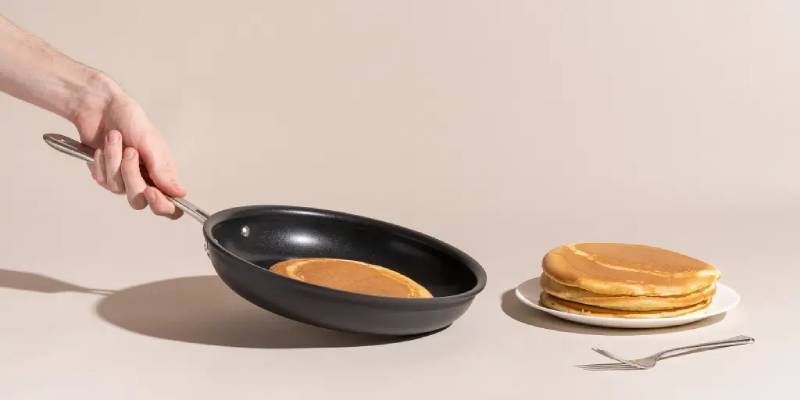
This is my comprehensive analysis of three alternative options to non-stick pans, all of which do not contain Teflon. Additionally, I will reveal a surprising conclusion at the end.
Once again, that familiar moment had arrived. It occurs every 2-3 years, regardless of how carefully I handle a non-stick pan. Another non-stick pan was beginning to lose its effectiveness and stick.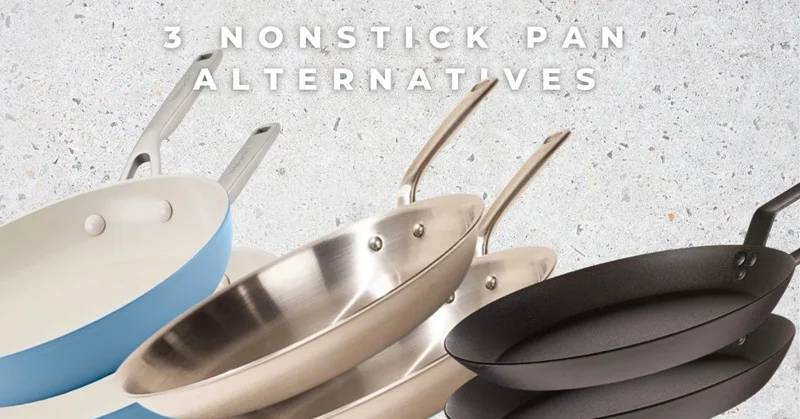
As I stood there, attempting to scrape off the remnants of scrambled eggs from the now adhesive pan, I made a decision: Enough is enough!
This cycle of constantly replacing pans every couple of years had to come to an end. I needed to transition to a pan that would endure. I needed to explore alternative non-stick pan options that were viable.
Now, please understand that I am not taking a stance in favor or against Teflon cookware. Personally, I prefer stainless steel for my cooking needs. However, I always have a non-stick pan or two in my kitchen because, let's face it, how else can you cook delicate items like eggs, crepes, and pancakes without creating a disastrous mess?
However, there is an undeniable truth that must be acknowledged:
THE PROBLEM WITH TRADITIONAL NON-STICK PANS
Regardless of how delicately you handle a conventional non-stick coated pan or the manufacturer's assurance of using NASA approved materials, there will inevitably come a time when it begins to adhere.
WHY DO NON-STICK PANS START TO STICK?
Teflon or PTFE, the common materials used in traditional non-stick coatings, are essentially plastics. With the passage of time and regular use, these plastics gradually break down. As per information from Wikipedia, PTFE (also known as Teflon) starts to deteriorate when the cookware's temperature reaches approximately 260 °C (500 °F), and completely decomposes at temperatures above 350 °C (662 °F). Consequently, it evaporates into fumes.
Despite the use of low to medium heat, it is surprising how quickly a non-stick pan can overheat. In a test conducted by the Good Housekeeping Institute, an empty pan reached over 500°F in less than 2 minutes, while a pan with oil took only 2.5 minutes to reach 514°F.
Even if your pan is reinforced with materials like titanium, diamonds, granite, or stone, it does not prevent the fundamental properties of PTFE from deteriorating.
Furthermore, regardless of whether you use wooden or silicone utensils, the plastic coating on the pan inevitably gets scratched. Over time, these scratches accumulate and further diminish the non-stick functionality of the pan.
AVERAGE LIFE OF A TRADITIONAL NON-STICK PAN
Most non-stick coated pans have a significantly shorter lifespan compared to stainless steel or cast iron pans, which can last for decades. Light weight and cheap pans typically last around 1 year, unless they are subjected to extreme abuse. On the other hand, a good quality pan with a heavy gauge base and multiple layers of reinforced non-stick coating can last for approximately 3 years.
However, the actual lifespan of your non-stick pan may vary depending on how frequently and intensely you use it. If your non-stick pan manages to remain non-sticky for more than 3 years, you have my utmost respect, as that is a milestone I have yet to achieve.
WHAT GOT ME THINKING
Returning to the topic at hand, I found myself standing and removing eggs from my pan while contemplating alternatives to non-stick pans. This train of thought was prompted by the numerous comments from my readers expressing concerns about the safety and environmental impact of PTFE.
I pondered, why not explore the possibility of cooking these "sticky foods" in different types of pans? Perhaps I could find a solution that would not only address my own desire to avoid replacing pans every few years, but also provide a non-PTFE option for my readers.
Specifically, I wanted to determine if I could successfully cook eggs, a daily staple in our household, on a non-teflon pan.
Before I proceed, I must clarify a few things:
1. I am the type of cook who does so out of necessity, therefore convenience is of utmost importance to me.
2. Regardless of how non-stick a pan claims to be, I always use a light brush of oil or butter when cooking eggs. This remained a constant factor in my experiments.
3. Yes, I am aware that non-stick pans are designed to reduce the need for added fats. However, in this case, a small amount of fat goes a long way. It enhances the taste of the food/eggs, improves the performance of the non-stick pan, and if it is a healthy fat such as butter, olive oil, or coconut oil, it can be beneficial for you.
Now that we have addressed any concerns regarding the use of fats, let us proceed with the findings of my experiments.
3 EXPERIMENTS IN THE SEARCH FOR NON-STICK PAN ALTERNATIVES
Non-stick pan alternatives – Experiment # 1 – Carbon Steel Skillet
Type of Pan: Carbon Steel. Specifically, this is the first type of carbon steel pan that I own and use. Similar to cast iron, carbon steel is a material that naturally possesses non-stick properties and is expected to become even more non-stick over time as the patina develops.
For this initial test, I decided to use my reliable Lodge carbon steel skillet. Although the pan came pre-seasoned, I have had to re-season it over time. If you are curious about the proper way to season a steel or cast iron pan, I recommend reading this article for some helpful tips.
Carbon steel - first attempt:
During my first attempt, I must confess that I added a bit more oil than intended, as I was genuinely concerned about the eggs sticking.
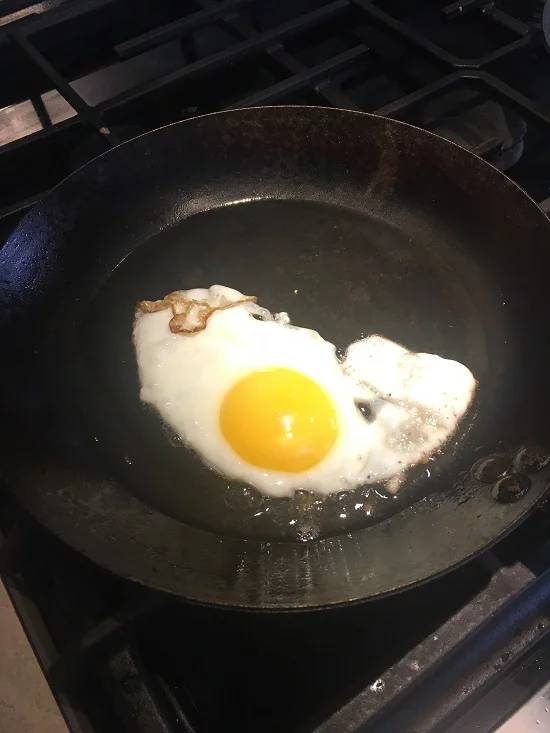
Result: Fortunately, the egg came off easily enough (hooray!), although there was some residue left in the pan. However, it was simple to scrape off, so it wasn't a complete failure.
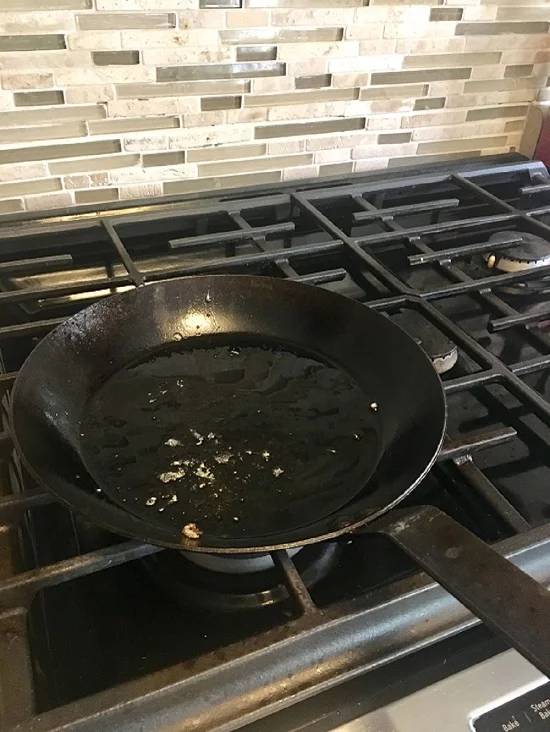
Carbon steel - second attempt:
Despite my dissatisfaction, I decided to give it another try. This time, I applied only a light coating of oil, similar to how I cook on any non-stick surface, in order to make a fair comparison. Surprisingly, the eggs came off easily, but they left behind a larger residue.
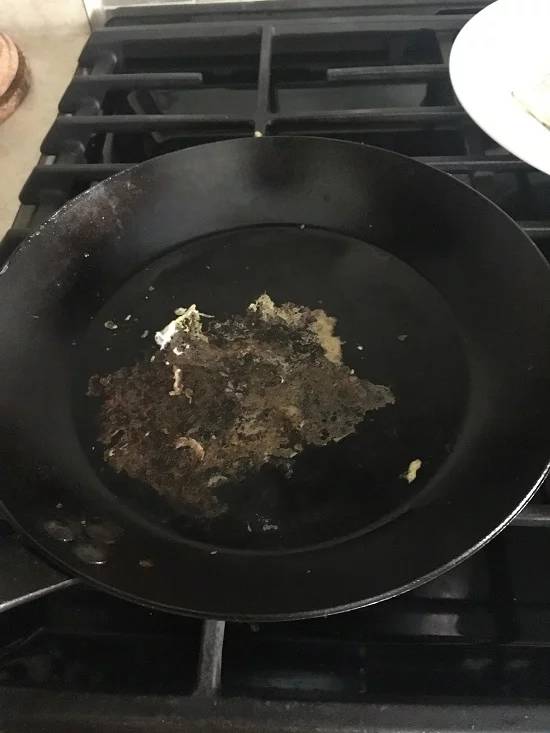
There could be a few reasons for this outcome. It's possible that my pan was not seasoned properly or that I didn't preheat it sufficiently.
After this experiment, I can see the potential in using carbon steel as a non-stick alternative. However, I'm still not convinced that it is the best nonstick pan without Teflon. Am I ready to switch to carbon steel as my go-to pan for cooking eggs on a daily basis? Not yet. No matter how well seasoned or how much practice I put into it, I don't believe that a carbon steel or cast iron pan will ever match the slippery non-stickiness of Teflon.
However, with enough use, practice, and a greater commitment to switching pans, carbon steel could become a viable choice for those in need of a non-stick pan, including for cooking eggs. Two factors play a role here - commitment and effort. It's up to you to decide the level of commitment you are willing to make.
Non-stick pan alternatives – Experiment #2 – Ceramic non-stick pan
Type of pan: Ceramic coated non-stick pan
This is the pan I have been using regularly for the past 10 months. When I first reviewed it, it was brand new and the eggs effortlessly slid out of it. Now, after 10 months of continuous use, I wanted to test if the non-stick coating would still hold up.
As before, I applied a light coating of oil to the pan and let it heat up. I then added the eggs and allowed them to cook on medium heat.
Words cannot fully describe the results, so I have included a video that demonstrates the eggs still sliding around the pan after cooking.
Traditionally, ceramic coated non-stick pans tend to lose their effectiveness after about a year. One of the reasons for this is that people often assume non-stick means no need for any fat usage. However, I believe that for optimal performance, a light coating of fat is necessary. Therefore, I expect this pan to continue performing well for a significant amount of time.
In conclusion, a high-quality ceramic coated non-stick pan appears to be a viable alternative to traditional non-stick pans. (For more details, please refer to the full review to understand why I believe this particular brand is superior to others in its category).
Is it the absolute best non-stick pan without Teflon? Will it need to be replaced after 2-3 years like traditional non-stick pans? I cannot say for certain, but only time will reveal the answer. Until then, I will continue to use it, always with a light brush of butter.
Non-stick pan alternatives – Experiment #3 – Stainless Steel
Type of pan: Stainless steel
After two failed attempts, I decided to give it one last shot at finding a non-stick pan alternative. This time, I opted for a triply pan made of heavy gauge aluminum, which also happened to be reasonably priced for those interested in stainless steel cookware.
To be transparent, this wasn't my first time trying to cook eggs on stainless steel. I had previously attempted it after watching a video, but unfortunately, it didn't turn out well.
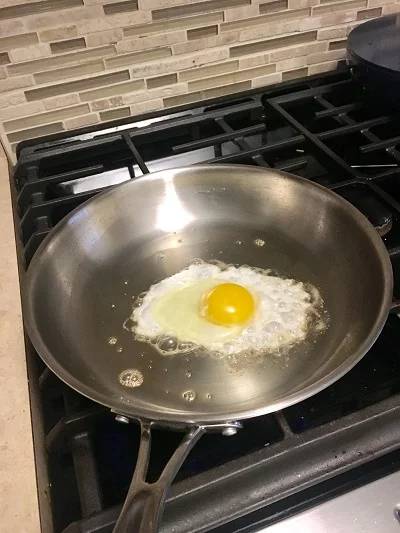
However, armed with the knowledge of the secrets to cooking with stainless steel, I was determined to give it another go. The key, I discovered, was to preheat the pan thoroughly before adding a generous amount of butter or oil. I followed this advice, although I felt like I was using more oil than I preferred.
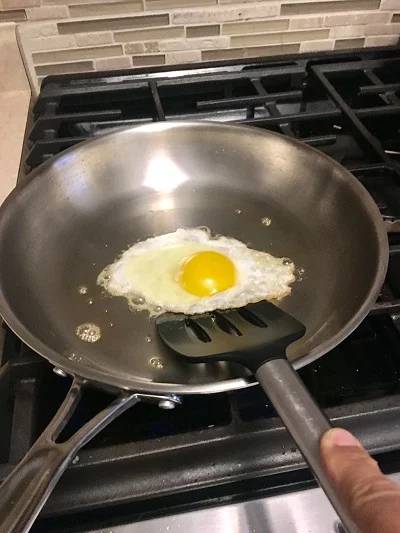
Initially, things seemed promising as the eggs easily lifted off the edges of the pan when they appeared to be done. But upon completion, there was still a significant amount of residue left behind.
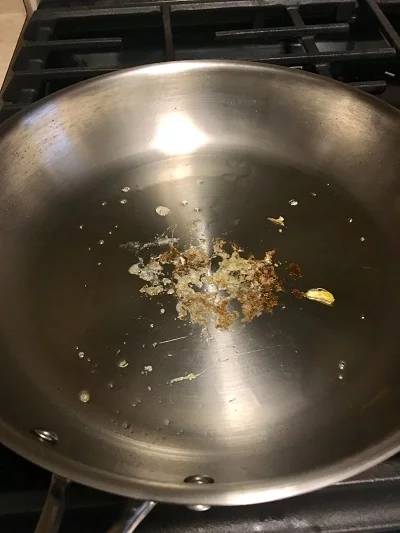
While it's possible that with more attempts, I could improve and potentially master the art of cooking eggs on a stainless steel pan, I must admit that it requires more effort than I'm willing to invest.
In conclusion, unless you're truly dedicated to perfecting the technique of cooking eggs on a stainless steel pan, I wouldn't recommend it as a viable non-stick alternative. It demands excessive amounts of oil, fat, or butter and involves a steep learning curve. I'll pass on this option.
IN SUMMARY
I conducted a thorough test on a carbon steel skillet, a ceramic coated pan, and a stainless steel pan in order to find the most effective nonstick pan without Teflon.
1. Carbon steel - Although it shows potential, it requires a significant amount of effort and commitment to maintain its nonstick properties.
2. Ceramic coated non-stick pan - A high-quality ceramic coated non-stick pan could serve as a viable alternative. However, there are lingering concerns about its durability and whether it can outlast the typical lifespan of a traditional non-stick coated pan, which is around 2-3 years.
3. Stainless steel pan - Personally, I will have to decline. While I appreciate stainless steel for various cooking purposes, it fails to meet my expectations when it comes to cooking eggs. Now, if you'll excuse me, I need to go scrub off the stubborn residue left by the eggs.
SURPRISING CONCLUSION
I succumbed to temptation and ultimately decided to invest in a brand new PTFE pan specifically for the purpose of frying eggs and making crepes. This particular pan is the one that caught my eye and ended up in my shopping cart.
Of course, everyone has their own preferences and choices when it comes to cookware.
Personally, I consider myself a "cook because I have to" kind of person. This means that I lack the interest and dedication required to become a master at cooking eggs using a different type of pan. Additionally, I have no qualms about using a PTFE pan every now and then. Convenience is a significant factor for me, especially when it results in perfectly cooked eggs.
Have you ever attempted to switch to a different non-stick pan for cooking eggs? I would love to hear about your experience. Feel free to share your thoughts below.